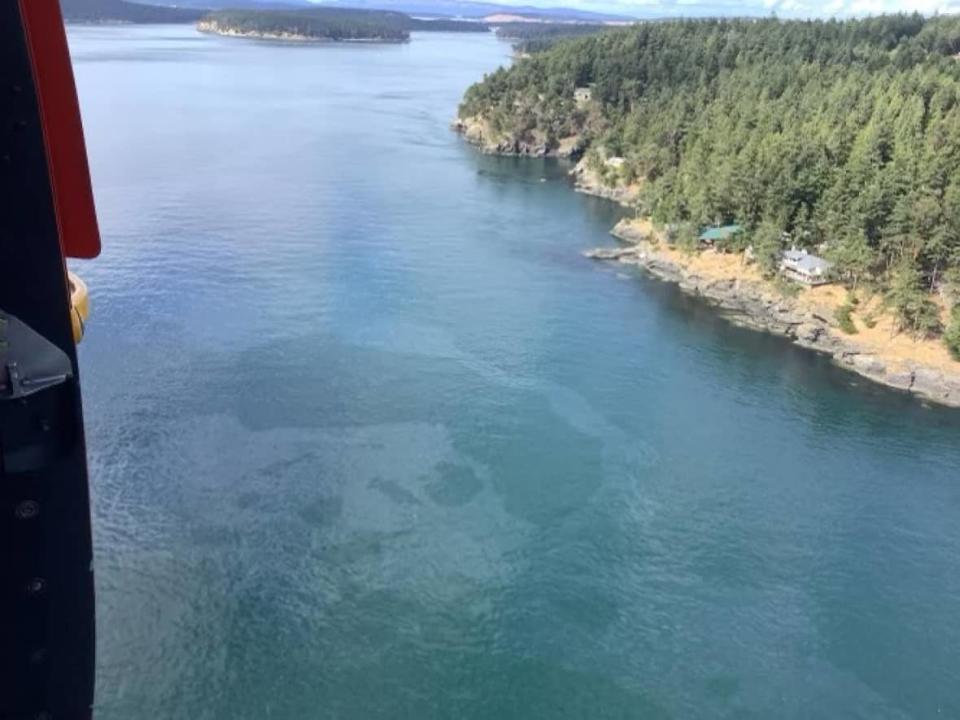Coast guard monitoring oil spill off southern Vancouver Island

U.S. and Canadian authorities say they're working together to manage an oil spill near San Juan Island, Wash. — just off the southern tip of Vancouver Island.
The spill started Saturday after the fishing boat Aleutian Isle started sinking near Sunset Point, which is on the west side of San Juan Island.
The U.S. Coast Guard (USCG) said in a statement that the vessel had nearly 9,840 litres (2,600 U.S. gallons) of oil and diesel on board. A nearly 2.8 kilometre-long sheen from the spill was visible in an aerial image tweeted out around 6 p.m. Saturday.
"The vessel is more than 100 feet (30 metres) under water and is currently polluting," said a spokesperson from the Canadian Coast Guard. "The Canadian Coast Guard is working closely with the USCG and is ready to respond and ready to assist as required."
All five people on board the fishing boat were rescued as it sank, according to the USCG's statement.
The spill is raising concerns over the southern resident killer whales, which are severely endangered and swim in the Salish Sea.
An update from the USCG on Sunday morning said the killer whales were located by researchers west of Port Angeles, Wash., which is a good distance south of the spill.
"We are using the sonograph to track any [killer] whales that might be moving toward the affected area," said Petty Officer Michael Clark with the USCG on Sunday. "We did not see any."
The coast guard said it is willing to employ deterrents to ensure the orcas do not enter the area of the oil spill.
"We've been on scene continually, regulating vessel traffic in the area and managing vessel traffic," said Clark.
"People on scene are essentially continuing to survey the effects on the environment, and observing the scene itself and creating a trajectory model, so that we can properly create a containment and recovery plan moving forward."
A dive team was on location Sunday as crews attempted to figure out how to mitigate the pollutants coming from the boat, according to Clark.
Later Sunday, a release from the USCG said divers would try to reach the sunken vessel Monday morning to better assess its condition, plug its vents and begin removing fuel from the vessel.
The USGC said a safety zone of nearly 1,000 metres would be implemented at 7 a.m. around the dive boats to ensure safety.
Clark said investigations are still underway to determine whether the boat and its crew were disobeying laws regarding water pollution. If they are found liable, according to Clark, they could be fined.

